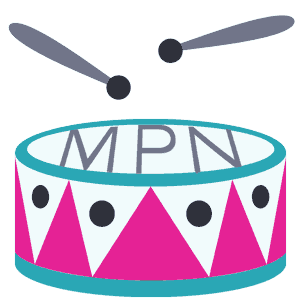CA DWC Must Stop Pretending MPNs Work

A real friend tells the truth, even when it’s uncomfortable to hear.
As advocates for a better workers’ comp system, we haven’t been shy about pointing out its shortcomings, particularly Medical Provider Networks (MPNs) — nominally a way for employers and insurers to control costs by restricting access to care while simultaneously ensuring adequate care.
In practice, MPNs are (arguably) an impediment to care. But don’t take our word alone for it.
Not only is it virtually impossible for doctors to determine if an MPN applies to a given injured worker; it’s also an apparent challenge to the professionals who, of all people, should be able to answer the following questions in the event of a workplace injury:
- Does an MPN apply to the patient?
- If so, which providers are members of that MPN?
Take for example, the claims adjuster who reached out to us in response to one of our many MPN-bashing articles. As their candid admission (shown below) illustrates, no one can sort through the pile of mismatched puzzle pieces that is the current MPN system.
The result? Doctors are fleeing the system, and injured workers are hitting dead ends in their treatment.
California employers, pay attention. If you consider it in your interest to ensure that employees are taken care of in the event of an injury, one of the worst things you can do is restrict their treatment to an MPN. To do so puts employees at the mercy of a broken system — one state regulators seem in no rush to repair.
CA Claims Adjuster: MPNs “Kafkaesque”
In an email sharing an article on Sedgwick’s denial of payment for non-membership in a terminated MPN, we posed a simple challenge to providers: determine the applicable MPN for each injured worker treated in a single week.
We did not expect anyone to succeed at this challenge, and to our knowledge, no practice did.
Of course, providers are not our only readers (or customers). A claims adjuster felt compelled to share the truth from the payer perspective in the email below, in which they acknowledged:
“...I have trouble navigating our own MPN listings and have even been chastised by management for using the wrong MPN listing only to later find the MPN list I was told to use by a supervisor or manager was incorrect.”
“It is Kafkaesque to say the least and has left me to find creative ways to assist injured workers in continuing to receive care.”
Of course, this claims adjuster is not the only payer-side professional who struggles to navigate MPNs.
We still have yet to hear back from a Sedgwick adjuster regarding a mystery MPN, after the Third-Party Administrator (TPA) gave daisyBill agents a disconnected phone number for the required MPN provider contact and Medical Access Assistant (MAA). And time after time after time, we see provider bills denied for non-membership in MPNs that are non-existent, or not maintained by the employer or insurer.
Doctors cannot navigate this. Claims adjusters cannot navigate this. MAAs — whose entire job is to navigate this — cannot navigate this.
The Solution: MPN Data Management
We’ll beat this drum until the stick breaks, and pause only long enough to find another stick: the Division of Workers’ Compensation (DWC) must create a functioning, centralized, updated MPN database where providers can check eligibility to treat simply by entering the employer name.
The current “database,” if anything so disorganized can be so called, is an online list of thousands of MPNs, the vast majority of which are terminated, suspended, withdrawn, or otherwise inapplicable. Insurers can maintain dozens of MPNs, with no way to match any of them to a specific employer.
In the rare event the DWC MPN list can match a functioning MPN with a given employer,
- The MPN’s own website is most often outdated (regulators only require MPNs to update the doctors listed on a quarterly basis).
- Lists of doctors are often unnavigable — i.e. useless to providers and patients alike.
- For the 2,000+ MPNs that are no longer approved, the DWC does not provide the date the MPN lost approval status (Yesterday? Today? Last year?).
Arguments in defense of MPNs almost always amount to some version of: “Employers are required to inform employees if their care is restricted to an MPN, and provide MPN information to facilitate care.” Whatever form this information takes (Memos? Posters in the breakroom?), it’s not working.
Injured workers should not bear the responsibility of navigating a maze that even doctors and adjusters cannot, simply because their employer was convinced that a broken system can save a buck without sacrificing care.
MPNs are a farce. To continue allowing California employers to believe otherwise is a disservice to their injured employees. If the state won’t fix the MPN mess, employers at least have the right to know about it.
Workers’ comp billing requires specialized expertise. daisyCollect agents use our advanced software (and unmatched experience) to protect your practice’s bottom line. Request a demo below:
REQUEST DEMO
DaisyBill provides content as an insightful service to its readers and clients. It does not offer legal advice and cannot guarantee the accuracy or suitability of its content for a particular purpose.



.gif)
